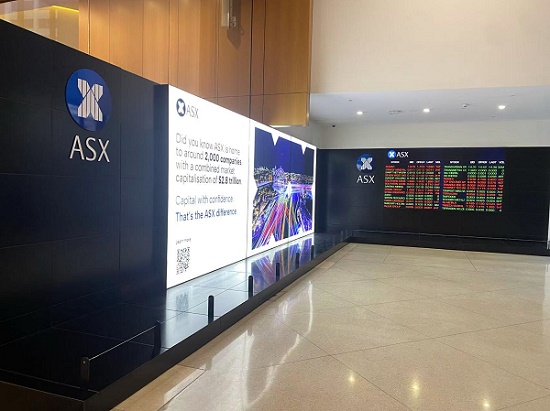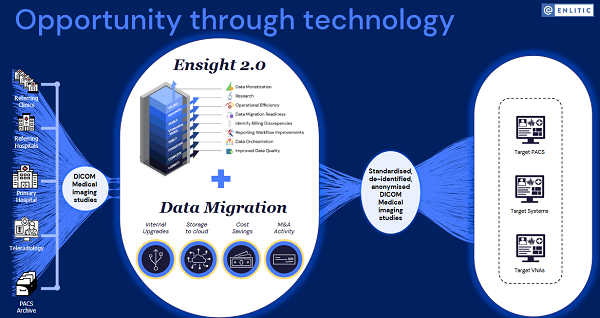-------OpenLearning CEO Adam Brimo访谈
不期而至的COVID-19 新冠疫情, 使澳大利亚国际教育行业面不得不面临行业洗牌局面。黑天鹅效应给传统教育带来冲击的同时,亦给相关在线教育行业带来机会和挑战。过去5年来,澳大利亚在线教育业发展已有提速之势,市场普遍预期该行业在后疫情时代有望迎来新一轮发展机遇。
疫情模式下赴澳留学生的减少,给澳高校运营带来日渐呈现的压力,倒逼澳大利亚国际教育提供方式的变革,使得远程在线提供模式有望在行业变革中更受青睐。
近日,本网记者通过ZOOM连线并采访了澳交所上市公司OpenLearning(ASX:OLL)CEO AdamBrimo先生,访谈中Adam先生向ACB News介绍了OpenLearning基本情况以及在线教育行业目前的发展,并针对本网近日的在线教育行业报告中提出的几点挑战分享了他独到的看法。以下为访谈全文。

OpenLearning(ASX:OLL)CEO Adam Brimo
ACB News : 请简单介绍下OpenLearning以及其和竞争者如Coursera、Future Learn的区别。澳大利亚Open University Australia对于在线教育行业,意味着怎样的角色?
OpenLearning(ASX:OLL)CEO Adam Brimo: 众所周知,以往传统的在线教育课程在大多数人看来,就是单纯的视频教学,随堂测评以及幻灯片展示。这样的学习方式我们称之为被动学习,人们被动接受信息,这样的学习吸收率低于30%。
事实上,几乎没有人可以单单靠观看视频而成为行业里的佼佼者,我们是在不断的实践中来获取知识,通过参与并完成不同的项目等主动学习方式来掌握独立思考以及解决问题的能力———这也是目前大多数雇主比较看重的能力。
OpenLearning一直致力于改变甚至颠覆以往传统的在线学习模式,提出以社会建构主义(Social constructivism)为基础的在线学习方式,通过搭建不同的项目活动让学生主动参与其中。
我们推崇的学习方式为,不是简单地告诉学生问题答案是什么,而是抛给学生在现实生活中的实际问题,让学生们主动去思考问题并探索出解决问题的办法。
Coursera提供的在线方式更偏向于被动学习,即提供在线视频以及在线测评,让学生们完成相应的测评即可获得结业证书,其总部设立在美国。Future Learn的总部设在英国,他们也提供社交式学习方式,包括小组讨论以及导师及时提供反馈。
和Future Learn相比,OpenLearning则更注重于更高层次的互动式学习。
简而言之,OpenLearning具有以下三大特色:
首先,OpenLearning是目前澳大利亚及东南亚地区最大的SAAS高等在线教育提供商之一,为教育机构提供网页架构并通过我们构建的平台向学生输送互动性的在线学习课程;我们同时也向教育机构提供在线课程设计;除此之外,我们也有自己的OpenLearning市场,教育机构可以通过该市场来售卖他们的在线课程,而平台使用者通过支付一定费用来获取该市场上所有课程。
其次是集中性的地理优势。 我们的市场集中在澳大利亚及马来西亚,也有来自其它国家包括印度尼西亚以及新加坡,美国的学生,我们也支持来自中国的学生。
专注于本地化的市场能让我们有足够的优势来挑选目前市场上最受欢迎的课程,也能让我们第一时间了解到雇主的真实需求。人们都有惯性思维来选择自己熟悉的品牌,对于在线学习课程亦如是,澳大利亚本地学生可能更倾向于选择他们耳濡目染的大学以及教育机构。
第三点是OpenCreds。 这是我们独家开发的微凭证证书(mirco-credentials)平台, 提供在线硕士、本科职业培训及其它相关专业课程。 课程学习时间从2.5小时到150个小时不等。另外,强有力的商业伙伴关系也是OpenLearning的一大特色。(编者注:OpenLearning现有商业合作伙伴包括澳大利亚新南威尔士大学,澳大利亚纽卡斯尔大学,澳大利亚迪肯大学,悉尼科技大学,澳大利亚天主教大学,澳大利亚西悉尼大学以及马来西亚当地著名的几所大学,合作机构包括澳大利亚出口委员会,澳大利亚工程师教育协会,澳大利亚新南威尔士州教师协会等)
而你提到的Open University Australia,是澳大利亚目前最大的在线课程平台,它本身没有属于自己的架构来为学生提供课程,他们将所有大学的在线课程归纳到一个平台,业务更侧重于市场销售。
Open University也是OpenLearning的合作伙伴之一,我们共同设立了Open Micro-credential Development Grant来支持大学机构提供微凭证证书课程。
ACB News: 在我们之前的远程在线教育行业报道中曾提到行业面临的几大挑战,我们希望进一步了解OpenLearning是如何看待和面对这些挑战。在提供您的反馈之前,请浅谈下您认为疫情对在线教育行业造成了怎样的影响?
OpenLearning(ASX:OLL)CEO Adam Brimo:毫无疑问,疫情加速在线教育行业的发展,促使更多的教育机构提供在线课程;事实上,愈来愈多教育机构转向网络向学生提供在线课程,我们可以观察到两方面的变化。
首先,教育机构和公众逐渐意识到在线教育的不同等级。疫情之前,当我们谈到在线教育,大家都会自然而然地想到打开软件,登录网站便可以在线学习,很少有人去思考如何给学生带来更具有互动意义的在线课程。学生也有反馈一般的在线教育课程没有让他们体会到更好的教学质量。因此疫情之后,教育机构也逐渐意识到设计良好在线课程的重要性,让学生们能够有更好的互动体验。
其次,短期课程更注重实践技能。疫情冲击之下,大批失去工作的人们开始意识到拥有不同技能的重要性,而雇主对于工作技能的要求亦进一步提高。整体而言,越来越多的因素促使人们去不断提高技能,但对于很多人来讲,再返回大学进行2年的研究生深造不太现实,因此短期的注重实践技能提高的课程变得尤为重要。

OpenLearning CEO Adam Brimo与公司CTO David Collien合影
行业关键词:政策因素
ACB News: 2015年6月,澳大利亚联邦政府宣布将由OpenLearning来构建其Massive Open Online Courses ( 备注:MOOCs是一种针对大众人群的大规模开放的在线课堂,没有学分要求规定)。去年十月,澳大利亚联邦政府宣布推出微凭证证书平台。您认为这是否是澳大利亚政府进一步支持在线教育的信号?
OpenLearning(ASX:OLL)CEO Adam Brimo: 首先我必须肯定传统大学教育的地位,高校在澳大利亚市场依然占据主要地位。但可以预见的是,澳大利亚政府会鼓励在线教育行业以及短期培训课程的发展,我当然也期望澳大利亚政府在今后能够持续支持在线教育行业的发展。
通常澳大利亚政府不会直接涉入课程的设计,政府的职责是设定规则以及行业法例法规,由教育提供商们在遵守规则的前提下,自行决定如何设计和运营在线课程。
行业关键词:资本因素
ACB News: 作为以软件即服务为主营业务的在线教育提供商,OpenLearning有一支强有力的工程师队伍致力于向其商业伙伴以及学生提供在线教育最佳解决方案。您认为技术与创新在OpenLearning的商业模式中担任着怎样的角色? 在商业实践中,科技研发费用支出与所需的资本投入来自哪些方面?
OpenLearning(ASX:OLL)CEO Adam Brimo: 我们有一只经验丰富的专业工程师技术队伍,竭力为合作伙伴提供最好的用户体验。我们的平台是在社会建构主义方式 (Social constructivism) 的基础上来设计的,所有的架构都必须围绕社会建构主义为中心,因此我们需要大量的资源配置和投入以确保强有力的竞争优势。
比如说,我们需要持续不断加强课程的设计和优化来保证我们260万的平台用户使用高质量的课程,同时需要持续开发新功能以确保学习者有更好的互动学习体验。
此外,让我们的合作伙伴简单容易地操作我们的软件,将高质量的在线课程提供给学生尤为重要。
我们最近开发出的学习设计平台(Learning Design Template)正是基于上述考量。该平台能让教育提供商们为学生提供更多的在线活动。比如说融合破冰游戏 (Ice break), 让参与者互相介绍自己,为学员提供轮流担任老师角色的机会,寓教于乐,在互动和主动参与中实现理论学习和实践统一。
教育提供商现在可以直接通过我们的网站,选择在线支付之后就可以直接开始利用我们的平台来设计他们的在线课程。我们希望通过这种模式为更多中小型教育提供商带来更便捷的用户体验。
公司运营支出方面,除去以上平台开发费用外,其它的费用包括职工工资、聘请行业专家及其它管理费用。
ACB News: 请您谈谈OpenLearning未来三年发展的愿景,是否可以预测三年之后OpenLearning会实现持续盈利?
OpenLearning(ASX:OLL)CEO Adam Brimo:现阶段我们不提供财政预测,但可以肯定的是OpenLearning是有能力来实现盈利。
目前的问题是我们需要持续不断的投入到新项目以及新技术之中,举例来说,我们现在开发的项目是为教育提供商提供软件即服务的在线学习后台,这需要大量的开发费用。现阶段的投入是为今后的盈利打下牢固的基础,我们的这些项目收入都是建立在共享教育提供商收入的模式上,这些项目未来会为OpenLearning带来更多的现金流。
未来OpenLearning将持续保持其在澳大利亚以及东南亚地区在线教育行业的领先地位,作为澳大利亚以及东南亚地区最大的在线教育服务提供商,我们将聚焦于澳大利亚以及马来西亚市场,同时我们也会和更多位于新加坡以及印度尼西亚的教育机构洽谈合作。
行业关键词:社会认可
ACB News: OpenLearning提供短期微凭证证书以及在线本科,硕士文凭,这样的在线学习证书被澳大利亚社会广泛认可并接受。但对于国际留学生以及求职者来说,是否能获得母国雇主的认可仍待探讨。
您认为在线教育证书文凭是否能够被其他国家的雇主所接受呢?您是如何看待这其中的机会与挑战呢?
OpenLearning(ASX:OLL)CEO Adam Brimo:各国对在线教育文凭的认可程度不尽相同,在澳大利亚,如果你选择在线课程来完成学位,对于澳大利亚雇主来说并没有什么不同,因为雇主更看重的是整个学位以及课程的质量。
事实上,澳大利亚本地学生更倾向于选择在线远程教育完成他们的研究生课程,这样能够更大程度地节省开支和学习时间。
对于其它国家,线上教育和线下教育的认可度的确有不同之处。
比如说,在某些国家申请政府部门工作岗位,通常可能会要求应聘者所接受的教育课程是通过线下教育完成。 就整个行业以后的发展来看,线上课程和线下课程有机融合会是一种趋势。
我认为对国际学生来讲,线上课程和线下课程结合会是一种最佳选择,这意味着学生可以在其它国家完成1-2年的在线教育课程,之后再来到澳大利亚完成2年的学习。这样一来,可以节省大笔的生活费用以及学习时间,顺利完成留学过渡阶段,同时也能确保学生能够得到最好的学习体验效果。
ACB News: OpenLearning与新南威尔士大学环球部合作向国际留学生提供UNSW Transition Online Program,该项目将于2021年3月启动。国际留学生今后是否可以通过OpenLearning的在线课程项目来申请新南威尔士大学并获得录取?请进一步介绍该项目的优势以及国际留学生能够从中收获什么。
OpenLearning(ASX:OLL)CEO Adam Brimo:国际留学生可以通过在OpenLearning平台申请UNSW Transition Program,如果他们成功申请到该项目并且顺利完成4个月的在线学习,那么他们就会被UNSW录取。UNSW将会向申请成功的国际留学生派发录取信(COE)。(https://www.unswglobal.unsw.edu.au/programs-courses/foundation-studies/transition-online/)
OpenLearning作为该项目平台服务商将负责整个项目的设计,UNSW Global负责项目市场推广,课程质量以及课程内容。该项目的推进能够成功地缩短国际留学生语言过渡阶段,传统的过渡课程是线下教学,时长高达一年,而我们推出的在线项目是4个月。
OpenLearning将确保互动性以及时效性在整个学习过程中得以充分体现,学生将会在当天得到老师的反馈,并且会组建成学习小组,每个学习小组将会有一名指导老师来辅助学生的学习以及解答疑惑。
行业关键词:课程质量
ACB News: 和在校学习相比,在线学习教育在大多数人看来无法达到最佳的学习效果,很多学生反映他们没有办法在第一时间得到导师反馈,没有办法和同学们进行互动,在线学习使得学生极易受到其他事物的干扰,学生们关闭摄像头通过ZOOM视频来被动接受讲师的演讲。您在之前也提到过传统在线教育的弊端。那么,OpenLearning是怎样来解决课程质量这一难题,能让学生们获得最好的学习体验并达到预期学习效果呢?
OpenLearning(ASX:OLL)CEO Adam Brimo:传统的线上课程并不能算是精心设计,大多数的线上课程要求学生们观看在线视频,完成在线测试,下载幻灯片,或者是通过ZOOM视频来向学生讲课,以此来期望学生们达到理想的学习效果是不太可能的。
OpenLearning在此基础上开创的平台大为不同,我们认为所有期望达到的教学效果都需要通过共同完成项目或者在线完成活动来实现主动学习,这些活动包括在线进行演讲,在线参与讨论,分享参与者的想法等等。课程导师需要提供及时的反馈,我们同时鼓励组建5人学习小组,来更高效的学习。
通过OpenLearning的平台,教育提供商将会为学生提供更具互动性的学习社交平台,而并非传统的导师一人授课学生们扮演听众。
举例来说,如果学生完成的在线课程要求他们在该课程上花费150个小时,那么该学生在我们平台上花费的参与活动及参与讨论的时间,会被平台自动记录并传输到平台数据库,作为日后评估成绩重要的因素。另外,平台另一端的教师籍此可及时捕捉到学生的表现,了解到学生是否主动参与到课程学习中,这一点恰恰是线下教育课程所缺失的。
在OpenLearning的平台,所有的课程都是以结果为导向,我们设计的活动以及项目都必须和课程想要达到的目标相符合。
这也对应了我们之前提到的,OpenLearning提供的是社会建构主义平台,让学生们能通过Project-based, activity-based的学习来巩固其知识系统,达到更好的学习体验。
行业关键词:资源整合
ACB News: 目前在线教育行业各大玩家各自为营,造成行业资源分散。我们留意到OpenLearning一直在尝试资源整合,去年十月OpenLearning举办了微凭证证书在线座谈会,请您介绍下该座谈会目的以及OpenLearning如何看待整个行业未来的整合发展趋势。
OpenLearning(ASX:OLL)CEO Adam Brimo:OpenLearning去年十月举办的微凭证证书在线座谈会上,我们邀请了行业领袖、商业伙伴,业内人士以及大学院校的行业先驱分享了他们对于微凭证证书的看法,使用OpenCreds的感想,对微凭证证书的应用策略,以及雇主方对于Micro-credentials的期望。
参与研讨嘉宾来自新南威尔士大学, 卧龙岗大学, 塔斯马尼亚大学, 迪肯大学, 澳大利亚注册会计师协会, 澳大利亚技术学院,澳大利亚蓝带国际学院,上市公司红山教育等(RedHill Education)
我们分别在澳大利亚和马来西亚组织了两场微凭证证书在线座谈会,都取得了特别理想的结果。
OpenLearning的核心观念之一就是构建和商业伙伴紧密的合作关系,以便为教育提供商提供最佳在线课程解决方案。对于高等教育提供商,我们需要随时了解行业最新动态,得到合作伙伴的反馈,才能更好的升级我们的服务。
(编者注:OpenLearning现有平台用户260万人,现有合作院校及机构167所,包括澳大利亚以及马来西亚的数所高等大学以及机构。)
OpenLearning希望借助于该在线座谈会来概述微凭证证书在澳大利亚的行业地位,启动微凭证证书的跨部门对话,为教育提供者提供互相学习及合作的机会,更力求帮助更多的组织机构构建他们的微证书课程。
通过搭建与不同教育机构和雇主机构的对话,我们可以预见在今后的工作学习中,更多项目将会通过在线教育方式来完成。疫情之后,我相信会有更多机会显现于在线教育行业。
古语云:是故学然后知不足,教然后知困。知不足,然后能自反也。正如Adam Brimo先生谈到的,互动的教学方式才能真正做到以学生为主体,更好的提高学生在线学习体验。
OpenLearning CEO: Seize the trend and embrace online education development opportunities in the post-epidemic era
-------Interview with OpenLearning CEO Adam Brimo / By Hannah
The unexpected COVID-19 pandemic has forced Australia's education industry to face an industry revolution. While the black swan theory impacts traditional education, it also brings new opportunities and challenges to online education industry. Over the past five years, the development of Australia's online education industry has accelerated, and the market generally expects that the industry is expected to bloom in the post-epidemic era.
The decline in the number of international students during the epidemic has put increasing pressure on Australian universities and forced the reform of Australia's international education delivery model, making the online learning delivery model expected to be more popular in the future.
Recently, ACB News’s reporter interviewed the Co-Founder & Group CEO of OpenLearning (ASX:OLL) through ZOOM. Mr. Adam Brimo gave us a brief introduction and the current situation and prospects of OpenLearning. Mr Adam Brimo also shared his unique views on the challenges that were mentioned in our previous online education industry report.
ACB News : Please briefly introduce OpenLearning and the difference between OpenLearning and its competitors, such as Coursera and Future Learn. What role does Open University Australia play in the online education industry?
Adam Brimo : As we all know, for most people, traditional online learning used to be video teaching, online quiz and Power Point slides. This way of learning is called passive learning, (such as listening to lectures, reading the slides, etc.) People passively receive information, (knowledge is passively transferred to mind). Such learning absorption rate is less than 30%. I believe that no one can become a leader in the industry by watching videos alone. People learn by doing, and through doing projects and activities to master critical thinking skills and problem-solving skills --- Most employers also value those skills.
OpenLearning changed the traditional online learning model and proposes an online learning method based on the concept of social constructivism, which allows students to actively participate in learning by joining in different projects and activities. The social learning method is that we will not tell students what the answer is, but give them actual problems, so that students can actively think and find solutions to problems.
The online courses provided by Coursera are more inclined to passive learning, that is, it provides online videos and online assessments, and students obtain the certificate after completing the corresponding assessments. The head office is located in the United States. Future Learn is based in the UK and they also provide social learning courses, including group discussions and timely feedback from tutors. Compared with Future Learn, OpenLearning is a higher level of social learning.
In short, OpenLearning has the following three unique advantages:
1. OpenLearning is currently the one of the largest SAAS learning platforms in the Australian and Southeast Asian higher education industry. We provide a platform for educators and institutions, allowing them to upload their teaching videos and activities, so that education institutions can deliver interactive online learning courses to students through our platform. We also design online course to education institutions. In addition, we have our own OpenLearning marketplace, education institutions can provide their online courses on the marketplace, and platform users pay a certain fee to get the courses access.
2. Geographical advantage: Our markets are concentrated in Australia and Malaysia. We also have students from other countries, including Indonesia, Singapore and the United States, we also support students from China. Focusing on the local market allows us to select the most popular courses on the market, and it also allows us to understand the needs of employers in the first place. People prefer to choose brands that they are familiar with. It is the same for online learning courses. Perhaps local Australian students are more willing to choose universities and institutions they are familiar with.
3. OpenCreds: This is our unique mirco-credentials framework, which provides online master's courses, graduate courses, vocational training courses, professional courses, and the learning time ranging from 2.5 hours to 150 hours. In addition, a strong business partnership is also a major feature of OpenLearning. (Editor’s note: OpenLearning’s current partners include the University of New South Wales, the University of Newcastle, Deakin University, the University of Technology, Australian Catholic University and the University of Western Sydney and several well-known local universities in Malaysia. Professional institutions include the Export Council of Australia and Professional Teachers Council NSW)
Regarding Open University Australia, it does not have their own learning platform to provide courses for students. Open University is currently the largest online higher education marketplace in Australia. They summarize all online courses of universities into one platform and focus more on marketing. . Open University Australia is also one of the partners of OpenLearning. On the platform, students can choose our micro-credential courses. We cooperate with Open University Australia to establish the Open Micro-credential Development Grant to support universities to provide Micro-credential courses.
ACB News: ACB News mentioned several potential challenges that Online Education providers are facing in the report, can you please tell us how OLL deals with the challenges. Before that, how do you see potential growth in the industry caused by the pandemic?
Adam Brimo :There is no doubt that the epidemic has accelerated the development of the online education industry, prompting more education institutions to provide online courses.
1. Education institutions and the public started to realize the different levels of online education. Before the epidemic, when we talked about online education, everyone naturally thought of opening the software and logging in to the website to learn online. Few people thought about how to offer students more interactive online study experience. During the epidemic, education institutions have gradually realized the importance of designing good online courses so that students can have a better interactive experience;
2. The development of short-term courses. Under the impact of the epidemic, a large number of people who have lost their jobs are beginning to realize the importance of having different skills, and employers' requirements for job skills have further increased. At present, there is a higher demand in the market to encourage people to upgrade their skills, but for many people, it is not realistic to return to university for two years of postgraduate study, so short-term practical courses have become particularly important.
Facts might bring impacts on the online education industry players:
Government Policy:
ACB News: In June 2015, the Australian Federal Government announced it would be getting its first MOOCs (massive open online courses, explanation of MOOCs in Chinese) delivered by OpenLearning. Last October, Australian government announced the establishment of National Micro-credential Marketplace. The concept of Mirco-credentials becomes more popular nowadays, do you think that the establishment of National Micro-credential Marketplace is a sign that the Australian government begins to give more support to Online Education.
Adam Brimo : First of all, I must affirm the important status of on campus learning, which still occupies a major part in the Australian market. But it is foreseeable that the Australian government encourages the development of the online education and short-term training courses. Of course, I expect that the Australian government will continue to support the development of the online education industry in the future. Usually, the Australian government is not directly involved in the design of the courses. The government's responsibility is to set rules and industry laws and regulations. Education providers can decide how to operate online courses on the premise of complying with the rules.
Capital factor
ACB News: As a SAAS provider and online education courses platform, OLL has a strong technical team to deliver the best solution to students and partners. How do you see the role of technique and innovation in OLL’s business, what are the major costs for those innovation to be implemented?
Adam Brimo : We have an amazing professional engineer and technical team, and strive to provide our partners with the best experience. Our platform is designed on the basis of social constructivism, and all structures must align with the social constructivism. Therefore, we need to keep investing to stay ahead in the market.
For example, we need to continuously strengthen the design of courses to provide high-quality courses to our 2.6 million platform users; we also need to continue to develop new functions to give learners better interactive experience.
Also, it is particularly important to ensure our partners can design high-quality online education courses for students by simply operating our software.
We recently developed Learning Design Template, which allows education providers to provide students with more online activities. For example, create an ice break game to allow participants to introduce themselves to each other; or give opportunities for participants to take turns in the role of teachers to teach and promote learning, which can achieve a higher level of combining theory and practice.
It is worth noting that education providers can now directly log on our website, choose the payment method, then they can start using our platform to design their online courses. Such a model may be more common in other industries, but as a software-as-a-service provider in online education industry, this model is relatively novel. We hope that this model can bring more convenience to more small and medium-sized education providers.
In addition to the platform development costs mentioned above, other costs include employee salaries, engaging industry experts and administrative costs.
ACB News: Can you please give us a picture of the company in 3 years? Will the company become profitable then?
Adam Brimo : At this stage, we do not provide financial forecasts, but to be sure, OpenLearning is capable of achieving profitability. The current thing is we need to keep in investing. For example, what we are developing now is to provide a software-as-a-service for education providers, which requires a lot of development costs. The investment at this stage is to build a solid foundation for future profitability. Our project income is based on revenue-shared model; these projects will bring more income to OpenLearning in the future.
In the future, OpenLearning will continue to maintain its leading position in the online education industry in Australia and Southeast Asia. As the largest online education service provider in Australia and Southeast Asia, we will focus on the Australian and Malaysian markets, and we will also cooperate with educational institutions in Singapore and Indonesia to discuss further opportunities
Social Recognition:
ACB News: OpenLearning provides micro-credential certificate as well as online degree to knowledge seekers. It is well-recognized by many Australian employers. However, for international students and learners, it might be harder to get full-recognition by their own country employers. Do you think that an online degree is good enough to be recognized by other countries? How does OLL see the future opportunity in this industry?
Adam Brimo : The recognition of online learning courses varies from country to country. In Australia, if you choose online study to complete the degree, there is no difference for Australian employers; because employers value the quality of the entire degree and course.
Most domestic students in Australia prefer to choose online learning to complete their postgraduate courses, which can save money and study time to a greater extent.
For other countries, the recognition of online education and offline education is indeed different.
For example, applying for the job in public sectors in certain countries requires the courses must be completed on campus. In terms of the future development of the entire industry, many courses have now begun to provide a combination of online courses and offline courses. I think the best solution for international students is to choose a combination of online and offline courses. For example, students can complete 1-2 years of online education courses in other countries, and then come to Australia to complete 2 years studies. In this way, you can save a lot of living expenses and study time, and successfully complete the transition phase of studying abroad, while also ensuring that students can get the best learning experience.
ACB News: OpenLearning cooperates with UNSW global to deliver the UNSW transition program online which will commence in March 2021. Does this mean that international students can apply for UNSW through OpenLearning’s transition program and get admitted by UNSW? How does this work and bring benefits to future international students?
Adam Brimo : International students can apply for the UNSW Transition Program Online on the OpenLearning platform. If they successfully apply for the program and successfully complete 4 months of online learning, they will be admitted to UNSW. UNSW will issue a letter of acceptance (COE) to international students who have successfully applied.
More information is available here:
https://www.unswglobal.unsw.edu.au/programs-courses/foundation-studies/transition-online/
OpenLearning, as the platform service provider of the project, will be responsible for the design of the entire project. UNSW Global is responsible for project marketing, quality assurance and course content. The advancement of this project can successfully shorten the language transition period for international students. The traditional transition course used to be offline teaching and lasted one year, while the project we launched is 4 months of online learning. OpenLearning will ensure the interactivity and timeliness of the entire learning process. Students will get feedback from the teacher on the same day and will form a study group. Each study group will have a tutor to assist students during their learning process.
Course quality:
ACB News: Compared with on campus courses, online courses are not so well-designed by some providers. Some of students might feel online courses are hard to get feedbacks from teachers, get interaction with their peers. It is easy to get distracted as everyone closes their cameras. Employers might be worried about the course quality. You also mentioned some problems in your speech in other media, so how does OLL deal with the course quality challenges and ensure students can be satisfied to obtain the expected results?
Adam Brimo : As you mentioned, traditional online courses are not well-designed. Most online courses require students to watch online videos, complete online tests, download slides, or use ZOOM videos to teach students. It is impossible to achieve the desired learning result.
The platform that OpenLearning creates is different. We believe that all expected teaching outcome need to be achieved through online projects or online activities. These activities include online presentation, online discussions, and sharing of participants’ idea and so on. The tutors need to provide timely feedback. We also encourage the formation of a 5-person study group to learn more efficiently.
Through the platform of OpenLearning, education providers will provide students with a more interactive social learning platform, instead of traditional online learning method, which is the lecturer gives a speech, and students act as the audience.
For example, if a student completes an online course that requires them to spend 150 hours on the course, then the time the student spends on our platform participating in activities, participating in discussions, will be automatically recorded by the platform database, and used as an important factor of performance evaluation. In addition, teachers can capture the performance of students in time on the platform, and further understand whether students actively participate in course learning. This is precisely what is missing in offline learning.
On the OpenLearning platform, all courses are result-oriented, and the activities and projects we design must align with the goals that the courses want to achieve.
This also corresponds to what we mentioned earlier that OpenLearning provides a social constructivism platform that allows students to consolidate their knowledge through project-based, activity-based learning and achieve a better result.
Resource integration
ACB News: Many online education providers operate individually and industry resources are relatively fragmented. OpenLearning is doing pretty well in collaboration. Last October, OpenLearning organized a micro-credential symposium; can you provide more information about this symposium? How do you see the future development in online education industry?
Adam Brimo : OpenLearning held two micro-credential online symposiums in last October. We invited industry leaders, business partners, industry experts and industry pioneers from universities, professional organizations and the corporate to share their views on micro-credential, their experience on using OpenCreds, their implementation strategy of micro-credential and the employer’s expectations for Micro-credentials.
(Editor's note: Guests are from the University of New South Wales, University of Wollongong, University of Tasmania, Deakin University, CPA Australia, TAFE, Le Cordon Bleu Australia, RedHill Education)
We organized two micro-credential online symposiums in Australia and Malaysia respectively, and both achieved satisfactory results.
One of the core values of OpenLearning is to build close relationship with business partners in order to provide them with the best online course solution. Especially for higher education providers, to obtain a better result, we need to keep abreast of the latest developments in the industry and get feedback from our partners.
(Editor's note: OpenLearning currently has 2.6 million users on its platform, and partners with 167 universities and institutions, including several higher education institutions and professional organization in Australia and Malaysia.)
OpenLearning aims at outlining the current trend of micro-credential in Australia and Malaysia, initiating a cross-sector dialogue on micro-credential, providing education providers with opportunities for mutual learning and cooperation, and striving to help more organizations build their micro-credential courses.
By communicating with different education institutions and industry experts, we can foresee that more projects will be completed online in the future. The epidemic has boosted the development of the entire industry, but after the epidemic has passed, I believe that more opportunities will appear in the online education industry in the future.
Editor’s Note : The old Chinese saying goes: It is learning from the content and then knowing the deficiencies, teaching and then knowing the difficulties. Knowing the deficiencies, then start to self-reflect, which is corresponding with what Mr. Adam Brimo said, the interactive social learning method can truly focus on students and better improve students' online learning experience.
【小编贴士:】手机端阅读时,点击文章页面左上Logo即可返回首页阅读。祝读者朋友天天健康、开心!工作投资顺利。
免责声明:本文为财经观察评论,不构成任何投资建议,交易操作或投资决定请询问专业人士。
( 郑重声明:ACB News《澳华财经在线》对标注为原创的文章保留全部著作权限,任何形式转载请标注出处。)

















